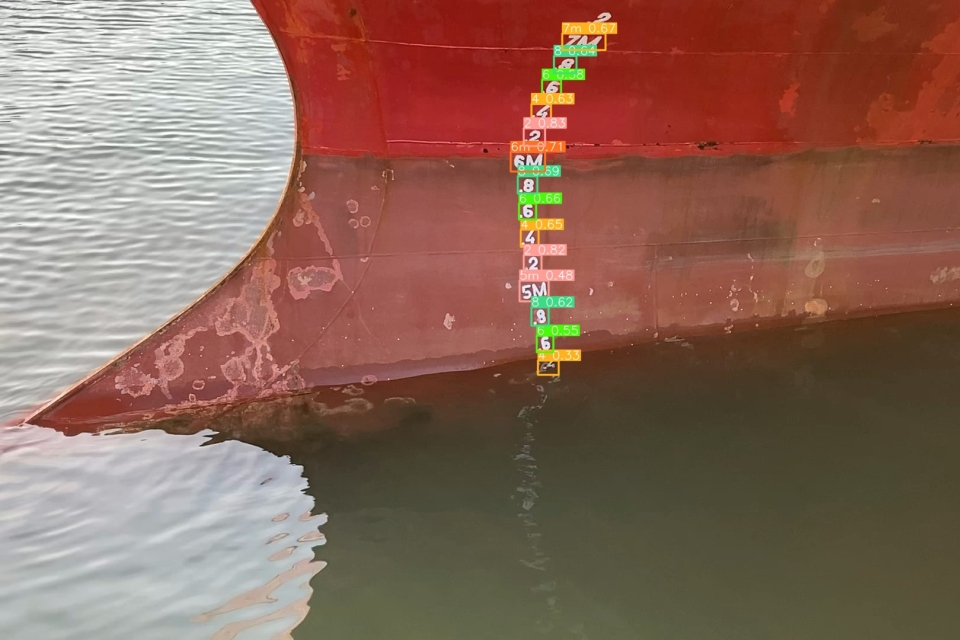Tymor Marine in Aberdeen has been awarded funding from Scottish Enterprise to further develop an app-based version of its draught survey technology. DRFT MRKS software uses artificial intelligence (AI) with deep learning applied to video capture to provide an accurate measurement of a vessel’s weight and load.
Accurate draught readings are essential for ensuring a vessel’s stability – determining how much cargo it is carrying and what depths it can safely navigate.
The grant funding from Scottish Enterprise will allow Tymor’s team to build on the operational capabilities of the DRFT MRKS software, refining the technology into a highly portable and commercially viable mobile phone app without the need for cloud-based processing.
Also read: Orca AI launches fully automated navigational assistant
Reducing safety risks
Since the time of Archimedes, mariners have conducted draught surveys – a means of determining the weight of a vessel and its cargo – by eye, but environmental variables and human error make it an inexact science. A misreading of the draught by just a centimetre could result in legal claims for apparent – but illusory – shortages of cargo.
Reading draught marks also comes with inherent health and safety risks for the mariners who conduct the survey. It requires getting close to the hull of a vessel or the underside of a floating structure, usually in a small boat.
Also read: Swedish Maritime Administration uses artificial intelligence in sea and air rescue
Optimising the deep learning functionality
Tymor Marine originally developed DRFT MRKS to help its in-house naval services team overcome the inherent challenges of conducting draught surveys. The firm was later supported by Scotland’s innovation centre CENSIS and the University of Edinburgh to optimise the deep learning functionality of the software.
Using cutting edge AI capability, the breakthrough DRFT MRKS tech helps to mitigate human error and challenging factors, such as faded or rusted markings, poor lighting, marine growth, bad weather, and the swell of the waves. The video capture can be collected at a safer distance from the vessel, either by a mariner using a handheld device on a boat, or by drone.
App version
Now the firm says that an app version of their software would have enormous industry potential.
‘In the next two decades, the digitalisation of operations will drive more changes in the maritime sector than we have seen in the last century,’says managing director at Tymor Marine, Kevin Moran. ‘Disruptive product-led innovations like DRFT MRKS will transform the mariner experience, contributing to a safer, more efficient experience at sea.’
He adds: ‘The funding from Scottish Enterprise is fantastic because it will allow our developers to refine our software, reducing its processing requirements so that it can be used within a smartphone app. The funding will help us to accelerate time to market with a new technology that is scalable, secure, reliable, and portable.’








